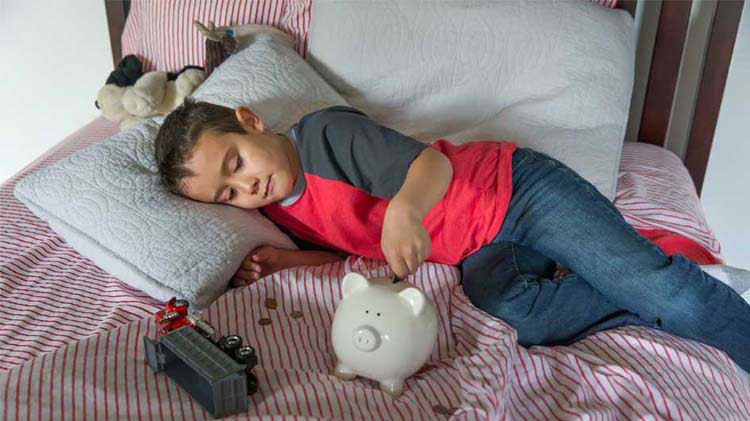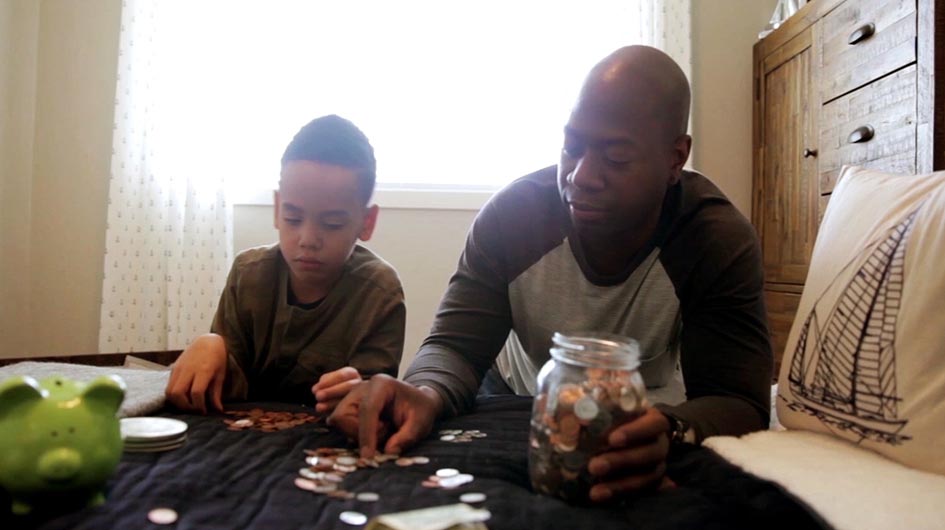Budget breakdown: How to create a budget
Types of expenses
There are three types of expenses to consider when building your budget: fixed, variable and non monthly expenses.
So, the equation from Chapter 1: How To Start a Budget really breaks down into:
Income - Fixed Expenses - Variable Expenses - Non Monthly Expenses = Money for Goals
Fixed
Everyone has fixed expenses such as mortgage, daycare, car payments, utilities. Making a list of these, along with your other typical expenses, will help you determine what you spend on fixed expenses.
Variable
These are expenses like groceries, ride share and dining out. They can change from month to month, so a good way to determine how much you spend is to keep track of them for three months and then you'll have an idea of what your average is.
Non monthly
These are also known as budget busters and can sometimes be larger expenses. Examples are: Christmas or attending a wedding (travel, housing, gift). These are expenses you know are upcoming, so you can take some of the pain out of the expense by estimating the cost and then dividing it by the number of months you have to save. When you absorb the cost over many months, the expense doesn't bust your budget.
Don't forget about emergency funds
Emergency funds can help you not reach for a credit card or eliminate the need to drain money from other savings when unexpected events occur. They help you keep enough cash on hand to cover deductibles or minor incidents. For emergency funds, try to save six to nine months of funds to cover any essential expenses. Think of it as insurance for your budget.
To start creating a budget, imagine it has two parts
- Money coming in. Where does your money come from? Make a list of all income sources.
- Money going out. Where does the money go? Is your money going to pay the rent or the mortgage? Utilities? Food? Clothing? Lattes? Take a few minutes to think about it and write down where your money is going.
If more money is going out than coming in, see if there are places where you can cut back a little. But don't go 0 to 60 when making changes to your budget or spending habits. You're more likely to succeed by taking small steps toward a change.
How to budget money — starting today
- Set a weekly allowance for spending money that starts on Monday. When the money you allotted for the week is gone, you're done spending for the week. This can help you be more selective when choosing what to spend at events, for meals or a quick coffee — you decide.
- Try the no spend days challenge. How many days in a month can you go without spending any money? Keeping track of your progress can help you see how well you're doing and keep you motivated. There will definitely be days when not spending isn't an option. And that's okay.
Now that you’ve figured out how to budget your money, you’ve taken a really important step towards building a solid financial future. You’re on your way.
Spending strategies to become a frugal superstar
It’s okay to be frugal on the things that don’t matter as much and spend more where it does. Let’s take a look at some spending strategies without having to sacrifice joy.
Start with a personal goal
Deciding how much you spend is easier if you have a goal in mind. Whether you're looking to put aside money each month or planning ahead for early retirement, it's important to be specific and honest with yourself about your own needs rather than following the suggestions of others.
Start brainstorming by writing down your top three financial goals. Once your intentions are clear, it's easier to build a budget that fits your needs and the 50/30/20 budget rule is an easy way to get started.
Try a zero sum budget
When you're ready to tackle your spending, try a zero sum budget where, on paper, all of your monthly income is allocated at the beginning of each month. After expenses, any left-over money should be deposited to a savings account or emergency fund before you spend it on other things that crop up throughout the month.
At the end of the month, your account, on paper, should be at zero with every dollar having been spent somewhere — rent, utilities, car payment, savings, investments — every dollar is gone. Then at the beginning of the next month, you start again.
Know your must-haves
Know your limits of what you will and won't sacrifice. That might mean you'll give up costly cable service and pay more for faster internet.
Try a simple exercise to build a budget without sacrificing joy. Use a printout of your credit and debit card statements to figure out what items or experiences you're not willing to strike from your budget. Having a visual of your monthly spending habits may make it easier to understand what you're willing to cut and what's important to keep in your budget.
Weigh the time commitment
Don't immediately pick the cheapest option. An example could be a DIY project. A homeowner might spend more money on hiring a professional for a home repair because of the time commitment. Or buying a high-end appliance that could outlast a cheaper model could save you time and money in the long run.
Budgeting calculators
- Calculate how to pay off debt
- Calculate ways to save money
- Are you better off paying down debt or investing?
- Calculate spending and see the value of spending less
Your chapter 3 checklist
- Watch the Budget Breakdown video.
- Download the Budgeting 101 Worksheet.
- Crunch the numbers on your budget.
Next steps
Figuring out what to budget requires some insights into your current spending habits.




